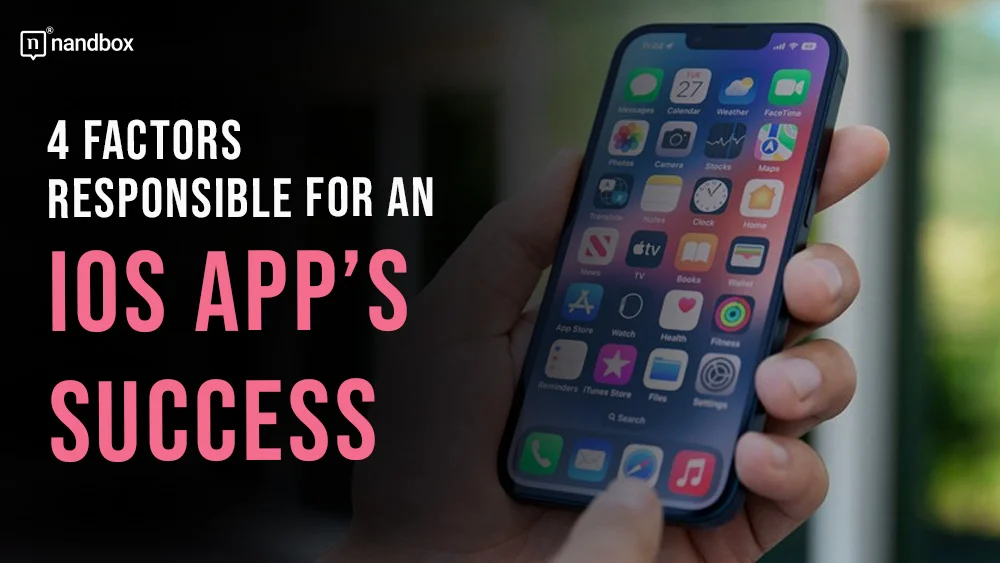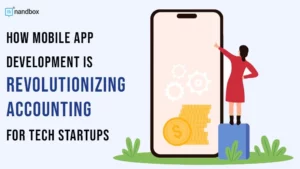iOS applications are on the market, and each update adds to their history. Apple is known for its sophisticated inventions, and every version demonstrates its strong technology integrations that distinguish its high-tech offerings. We can measure the success of an iOS app in a variety of ways, including user acquisition, retention and engagement, revenue generation, and more. On the other hand, app testing services are in high demand because of the rapid development of apps and the importance of user legibility. The software should be flawless in terms of quality, functionality, and overall user experience. Successful iPhone apps achieves the developer’s goal of providing value to its consumers. Here are the four key factors that contribute to iOS’s success.
Innovative Apple Products
Apple is best known for its innovative products, and the company has focused on developing high-tech inventions such as the iPhone, Apple Watch, etc. Here are the reasons why its notable products significantly contributed to its success:
iPod: Introduced in 2001, it redesigned how people perceive and listen to music. This handy portable music device allows users to enjoy the music and carry their entire playlist everywhere.
iPad: In 2010, the iPad launched and gained traction in the market when this device popularized the tablet invention. It provides a larger screen than a mobile device. It offers users a more immersive and interactive experience regarding online activities such as web browsing, communication, multimedia consumption, and gaming.
iPhone: Launched in 2007, the smartphone revolutionized the mobile phone market by providing multiple features that allow users to engage in a variety of digital activities in a more user-centric manner. A sleek device with an easy-to-use interface includes a music player and online communication features on a sleek device with an easy-to-use interface.
Apple Watch: This device transformed the health and fitness industries by introducing a wearable tracking feature. It connects to the iPhone, allowing users to make calls, access apps, monitor heart rate, get notifications, and do a variety of other tasks directly from their wrists.
HomePod: In 2018, Apple released the HomePod, a smart speaker. It includes Siri integration, high-quality audio, and voice commands for controlling smart home devices, playing music, and accessing data.
AirPods: Since their release in 2016, AirPods have reshaped the wireless earphone market. Its main features are seamless connectivity, high-quality sound, and a lightweight hardwire with no wires.
Apple’s innovations include a few products that transformed technology and user electronics. The company’s focus is on design, integration, and user experience.
Ongoing Revenue Services
Apple’s services, such as Apple Music, iCloud, and the Application Store, generate ongoing revenue streams. These services drive company growth and revenue while ensuring user inclusivity in the iOS environment.
These are a variety of subscription-based platforms and services that the company offers to its customers, which have generated significant revenue.
iCloud: This service provides Apple’s cloud storage and synchronized service, allowing users to save and access data like videos and other multimedia files. It offers subscription plans that give users additional storage beyond the free limit.
Apple TV+: This Apple service channel provides subscription-based video streaming, including original movies and shows. It features exclusive Apple entertainment that is only available on its products.
Apple Music: Apple Music is a music streaming service that provides access to a complete playlist of songs and exclusive content. It also offers offline and ad-free viewing options.
Arcade: The gaming subscription service provides unrestricted access to curated premium games. It shows no advertisements for gaming experiences on Apple’s products, which are accessible even offline.
Apple News: This service offers Apple News, magazines, and other digital publications that feature exclusive, personalized, and hand-picked content based on user preferences.
Apple fitness service: It is a subscription-based fitness service, provides on-demand workout courses in a variety of fields, including strength training and yoga. It integrates with the Apple Watch and provides real-time metrics for tracking users’ preferred fitness activities.
Strong Vision and Governance
Steve Jobs’ strong leadership has played a critical role in Apple’s success. His strong leadership, which serves as the foundation for the iOS platform, contributes to Apple’s success by emphasizing user-centricity, overall design, and simplicity. Here are its unwavering excellence and visions.
Clear company’s vision: Steve Jobs’ clear vision contributed to Apple’s success by focusing on users’ needs and predicting market trends. His leadership directed Apple’s software development, resulting in high-quality products that reshaped industries.
Innovation: Steve’s leadership embodies innovation, resulting in legendary products that revolutionized existing markets and established new trends in technology and electronics.
Marketing and branding: Since Steve’s tenure, Apple’s governance has adhered to the most recent marketing approaches and brand understanding. Each product launch generates a lot of buzz, and the number of loyal customers grows, resulting in massive revenue.
Commitment to ease of use: Job believes that simplicity and user-friendliness promote a better user experience, resulting in intuitive products that are accessible to a wider range of audiences.
User Experience
The primary factors contributing to iOS’s success are its user interface (UI) and user experience (UX). Here are the main reasons:
Intuitive design: Apple products are known for their user-friendly concepts, which allow users to navigate seamlessly and interact with the operating system in the best possible ways. The UI elements of the product aim to simplify navigation and device interactions, thereby minimizing complexity.
Consistency: Apple’s iOS has implemented a consistent design program across all of its products. It promotes a smooth transition between the integration of various iOS devices and applications, resulting in consistent interaction and familiarity.
Accessibility: Apple’s design ensures accessibility through usability and inclusivity for a broader audience, including people with disabilities.
Visual appeal: It features attractive visual designs such as high-quality illustrations, graphics, animations, and clear text. It provides a pleasant user experience, encouraging engagement and user satisfaction.
Smooth integration: iOS is known for its seamless integration with similar devices and apps. It promotes easy file sharing, file synchronization, a cohesive experience, and so on.
Wrapping Up
Steve Jobs’ strong leadership influenced the success of Apple’s products to this day. He left an immeasurable legacy of leadership and played a key role in transforming Apple into one of the world’s most influential companies. He left behind a strong vision and approach that the company continues to use today.
Simplicity, appealing designs, and intuitive and simple integration all contribute to the product’s overall success. Furthermore, Apple’s recurring subscription-based services not only generate significant revenue but also provide a stimulating experience and add value to Apple’s ecosystem.
Overall, the company’s success is based on the combination of the above, which provides a better experience for its customers.







